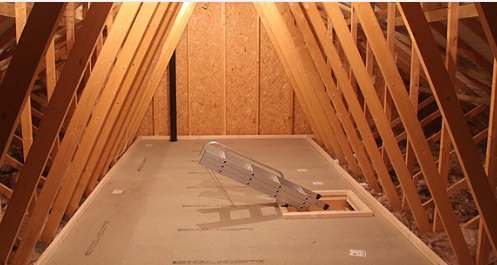Loft boarding is a popular solution for homeowners looking
Loft boarding is a popular solution for homeowners looking to create more storage space in their homes. It involves laying boards across the joists in the loft to create a stable floor that can be used to store items such as boxes, suitcases, and Christmas decorations. However, there are a few things you should consider before boarding your loft.
Firstly, it’s important to check whether your loft is suitable for boarding.
Not all lofts are suitable for this type of work, particularly if they have insulation between the joists. Insulation is important for keeping your home warm and reducing your energy bills, but if it’s compressed by boarding, it can become less effective. It’s also worth noting that some types of insulation, such as fibreglass, can be harmful if they’re disturbed. Before starting any work, it’s important to get a professional opinion on whether boarding your loft is safe and appropriate.
Assuming that your loft is suitable for boarding
The next step is to decide on the type of boarding to use. There are several options available, including chipboard, tongue and groove, and moisture-resistant boards. Chipboard is the most common option and is generally the cheapest. It’s easy to install and can be cut to size to fit the space you have available. However, it’s not particularly strong and can sag over time, particularly if heavy items are stored on it. Tongue and groove boards are more expensive, but they offer greater strength and stability. They’re also more resistant to sagging and can be a good option if you plan to store heavy items in your loft. Moisture-resistant boards are a good choice if you live in a damp climate or if your loft is prone to condensation.
When it comes to installing the boards, it’s important to take safety precautions. You should always wear appropriate clothing and safety equipment, such as gloves, goggles, and a dust mask. You should also make sure that you have a sturdy ladder and that you’re not working alone. It’s important to be careful when moving around in the loft, as the space can be cramped and there may be electrical wires and pipes that you need to avoid. If you’re not confident in your ability to do the work safely, it’s best to hire a professional.
Once your loft is boarded, it’s important to think about how you’re going to use the space. It’s easy to fill your loft with items that you don’t need or use, so it’s important to be selective about what you store up there. You should also make sure that you don’t overload the boards, as this can cause them to sag or even collapse. If you’re planning to store heavy items, such as furniture, it’s a good idea to reinforce the boards with additional supports or to use tongue and groove boards.
Another important consideration when it comes to loft boarding is ventilation. If your loft doesn’t have adequate ventilation, it can become damp and mouldy, which can damage your belongings and even affect your health. You should make sure that there’s sufficient airflow in your loft by installing vents or leaving windows open. You should also avoid storing items that are likely to produce moisture, such as wet clothes or plants.
In conclusion
loft boarding can be a great way to create more storage space in your home. However, it’s important to make sure that your loft is suitable for boarding and that you choose the right type of boards for your needs. It’s also important to take safety precautions when installing the boards and to be careful when moving around in the loft. Once your loft is boarded, it’s important to use the space wisely and to make sure that you don’t overload the boards. Finally, it’s important to ensure that your loft is well-ventilated to prevent damp and mould. By following these



